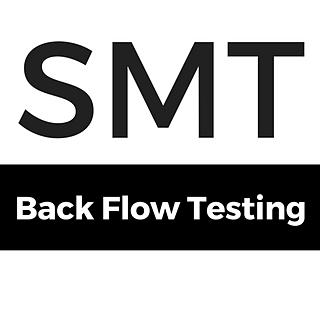Backflow Problems in Commercial Buildings: What to Watch for in Irrigation Season
- Steve Tamkee
- Sep 13
- 2 min read

With the heat this summer, commercial buildings across the Lower Mainland have ramped up their irrigation schedules to maintain curb appeal and landscaping standards. But with higher water use comes a higher risk of backflow issues—especially in systems that haven’t been maintained or tested recently. Here’s a look at the most common backflow prevention problems commercial properties face during the summer months, and how to stay ahead of them.
1. High-Demand Water Use Creates Pressure Fluctuations
Commercial buildings often run large-scale irrigation systems early in the morning or late at night to avoid peak-hour usage. But these coordinated watering times can cause pressure drops or surges in the system.
Why it matters: Sudden changes in pressure increase the risk of backflow, which can pull contaminants like fertilizer, pesticides, or soil particles into the potable water system.
What to do: Stagger irrigation zones and closely monitor water usage. Ensure your backflow preventer is tested annually by a certified technician, as required by municipal bylaws.
2. Sun Exposure and Heat Damage to Outdoor Assemblies
Most commercial irrigation systems utilize RPZ (Reduced Pressure Zone) assemblies or double-check valves, which are often installed in exposed exterior areas. Prolonged sun and heat can degrade rubber seals, plastic parts, and metal housings.
Why it matters: Even a small crack or warped seal can render the device ineffective—leaving your building’s water supply at risk.
What to do: Inspect visible devices monthly during the summer and install protective enclosures where possible—schedule seasonal servicing for any system that runs daily.
3. Leaks in Landscaping or Irrigation Lines
Irrigation lines buried under commercial landscaping can shift, split, or become damaged due to increased summer activity, vehicle traffic, or plant overgrowth.
Why it matters: Leaks downstream of the backflow preventer can reduce pressure and cause siphoning, which could draw contaminants back into your system.
What to do: Monitor landscaping for signs of soggy patches or pooling, and review water usage reports for unexpected spikes.
4. Improper Spring Start-Up Procedures
If irrigation systems were shut down for winter, improper reactivation in spring can lead to unpressurized or partially connected backflow devices.
Why it matters: Systems that aren’t pressurized correctly or bypass the backflow preventer altogether put the entire building—and neighbouring systems—at risk.
What to do: Always use a certified backflow technician for spring start-up and annual testing. Avoid cutting corners during reconnection.
5. Clogged Air Vents and Relief Valves
RPZ and vacuum breaker devices in high-traffic or landscaped areas can become clogged with dirt, mulch, insects, or mineral buildup during dry months.
Why it matters: A blocked relief valve or air vent can prevent the device from functioning properly, potentially causing it to fail unnoticed.
What to do: Include backflow assemblies in your regular property maintenance checklist. Clean or flush components as needed and ensure annual testing is up to date.
Final Words
In commercial settings, water safety and system reliability are non-negotiable. With increased summer irrigation comes increased risk—especially for aging or unmaintained backflow devices. A proactive maintenance plan and regular inspections can help prevent costly repairs, water contamination, and code violations.
Tip: Many municipalities require annual testing of commercial backflow devices. Check your local regulations and book your inspection early in the season.




Comments